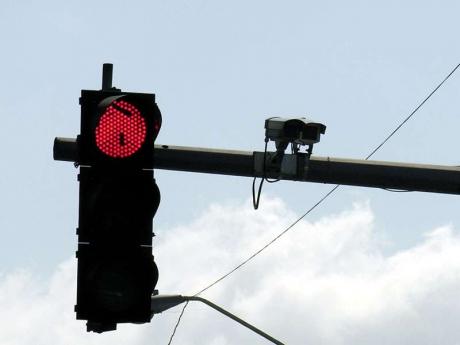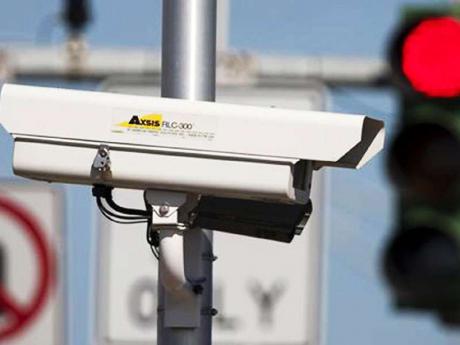Eye on traffic
Laranzo Dacres, Sunday Gleaner Writer
HAVE YOU noticed cameras atop some traffic lights in the Corporate Area? Well, these 'eyes on the streets' are part of the National Works Agency's (NWA) traffic management initiative.
"The cameras, which are in at least six locations, are still in the testing stage. But they have been accomplishing their intended purpose, that is to be an effective aid in traffic management," said Stephen Shaw, NWA's communication and customer services manager.
He said the traffic-monitoring cameras are in such heavily used areas as Half-Way Tree and Oxford Roads, and other parts of New Kingston.
The NWA uses footage to aid them in managing the flow of traffic in those areas and allows the agency to adjust the timing of the lights.
"By viewing the footage, we are able to add or reduce time to each signal at a particular intersection," Shaw said.
He explained the timing of each traffic signal varies at each intersection, depending on the flow of traffic moving into the intersection from each road.
"Here is how the traffic light works: one signal might be set for 60 seconds, one for 50 seconds, one for 30 seconds and the other for 20 seconds, depending on the number of vehicles that normally uses that intersection at any one time.
"If in monitoring the Half-Way Tree area by camera we see that traffic is backing up on, say, Hope Road, while there are fewer vehicles moving along the Constant Spring Road, we can modify the timing of the signals to give a longer time to one and a shorter time to the other," he explained.
The NWA communication manager said the cameras, which are part of a pilot programme, were installed over two years ago and plans were under way to expand the programme to other areas. The timeline for that expansion programme has not yet been finalised.
"For instance, we are looking at having a system implemented in Montego Bay, St James, in light of the traffic-management arrangements in that city," Shaw told Automotives.
Enhancement project
Shaw said he was not able to give Automotives a breakdown as to the cost of installing the cameras already commissioned, as that project was done as part of a wider systems-enhancement project.
Shaw noted that the footage from the cameras now in operation at selected intersections would only be used by the Ministry of Transport and Works and NWA for traffic-management purposes.
He also pointed out that traffic lights were now equipped with Light Emitting Diode (LED) technology.
"With this system, the bulbs are much brighter and fuel-efficient than the former systems that use the incandescent bulbs. The LED technology also allows for better interconnectivity," Shaw added.
The traffic lights that have already benefited from the LED technology are in the heavily used areas to include Kingston; Montego Bay, St James; Spaldings, Clarendon; Spanish Town, St Catherine; Ocho Rios, St Ann.
Like a number of developed countries, Jamaica has been gradually introducing the use of cameras on the roadways. For example, a number of Jamaica Urban Transit Company buses are equipped with cameras for security purposes and in the fight against vandalism on the vehicles.


